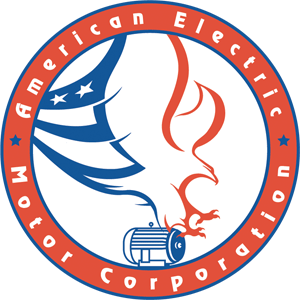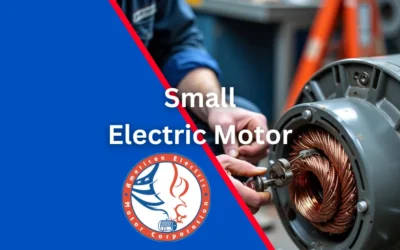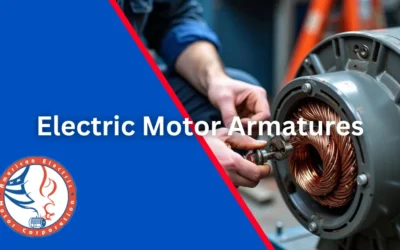Are you curious about how to maximize the lifespan and performance of your electric motors? Look no further! In this article, we have gathered valuable insights from repair shop experts on why regular maintenance is essential for electric motors. Whether you are a business owner or a homeowner, understanding the importance of regular maintenance can save you time, money, and headaches in the long run.
Electric motors are used in a wide range of applications, from industrial machinery to household appliances. They play a crucial role in keeping our everyday devices running smoothly. However, like any other mechanical system, electric motors require regular upkeep to ensure they continue to function optimally.
By implementing a proactive maintenance plan, you can identify and address potential issues before they become major problems. From cleaning and lubricating to inspecting and testing, our expert tips will guide you through the necessary steps to keep your electric motors in top-notch condition.
Stay tuned for our next section where we delve into the specific maintenance tasks you should perform on a regular basis. Get ready to unlock the secrets to prolonging the life and reliability of your electric motors.
Common issues faced by electric motors due to lack of regular maintenance
Without proper maintenance, electric motors can experience a range of issues that can impact their performance and lifespan. One common problem is the build-up of dust, dirt, and debris, which can hinder the motor’s airflow and cause it to overheat. Over time, this can lead to premature motor failure.
Additionally, lack of lubrication is another major issue that can arise from neglecting regular maintenance. Lubrication is essential for reducing friction and heat generation within the motor. Without proper lubrication, the motor’s components can wear out quickly, leading to increased energy consumption and decreased efficiency.
Furthermore, electrical connections and wiring can become loose or damaged over time, resulting in poor electrical conductivity and potential hazards. Regular maintenance helps identify and rectify these issues early on, preventing costly breakdowns and safety risks.
Benefits of regular maintenance for electric motors
Implementing a proactive maintenance plan for your electric motors offers numerous benefits. First and foremost, it helps you avoid unexpected breakdowns and costly repairs. By identifying and addressing potential issues before they become major problems, you can save both time and money.
Regular maintenance also extends the lifespan of your electric motors. By keeping them clean, lubricated, and properly adjusted, you can ensure they operate at their peak performance for years to come. This not only reduces the need for frequent replacements but also maximizes your return on investment.
Moreover, well-maintained motors are more energy-efficient. Clean and lubricated components reduce friction and heat, resulting in lower energy consumption and decreased operating costs. By optimizing the performance of your electric motors, you can also contribute to a more sustainable environment.
Tips from repair shop experts for maintaining electric motors
Now that we understand the importance of regular maintenance, let’s dive into some expert tips for keeping your electric motors in top-notch condition.
Importance of inspecting and cleaning electric motors regularly
Regular inspection and cleaning are fundamental to maintaining the health of your electric motors. Start by visually inspecting the motor for any signs of damage, such as loose wires, corrosion, or excessive dirt accumulation. Cleaning the motor regularly, both internally and externally, helps prevent the build-up of debris that can hinder its operation.
When cleaning the motor, use a soft brush or compressed air to remove dust and dirt from the exterior. For internal cleaning, follow the manufacturer’s guidelines and use appropriate cleaning agents. Be cautious when handling electrical components and always ensure the motor is disconnected from the power source before cleaning.
Lubrication and its role in maintaining electric motors
Lubrication is a critical aspect of electric motor maintenance. Proper lubrication reduces friction between moving parts, preventing excessive wear and heat generation. Consult the manufacturer’s guidelines to determine the correct lubrication type and frequency for your motor.
When lubricating the motor, ensure you use the appropriate lubricant for each component, such as bearings or gears. Over-lubrication can be as damaging as under-lubrication, so be mindful of the recommended amount. Regularly check the lubricant levels and replace or replenish as needed.
Understanding and monitoring motor temperature
Monitoring the temperature of your electric motors is crucial for preventing overheating and potential damage. Excessive heat can degrade the motor’s insulation, leading to insulation failure and short circuits. To monitor the temperature, use a non-contact infrared thermometer or install temperature sensors if available.
Check the motor’s temperature during operation and compare it to the manufacturer’s recommendations. If the temperature exceeds the specified limits, investigate the cause, such as inadequate ventilation or overloading. Taking prompt action can prevent irreversible damage and ensure the motor’s longevity.
The significance of electrical connections and wiring in motor maintenance
Electrical connections and wiring play a vital role in the performance and safety of electric motors. Loose or damaged connections can result in poor electrical conductivity, voltage drops, and potential fire hazards. Regularly inspect and tighten all electrical connections to ensure they are secure.
Additionally, check for any signs of wear or damage on the motor’s wiring. Replace any frayed or corroded wires promptly to prevent short circuits or electrical failures. Following proper wiring practices and ensuring connections are properly insulated can significantly enhance the reliability and lifespan of your electric motors.
Importance of regular motor testing and diagnostics
Regular motor testing and diagnostics are essential for identifying potential issues before they lead to motor failure. Conducting routine tests, such as insulation resistance and vibration analysis, can provide valuable insights into the motor’s health.
Insulation resistance tests help identify any insulation failures or degradation, while vibration analysis detects abnormal vibrations that may indicate mechanical issues. By performing these tests periodically, you can detect early warning signs and take appropriate action to prevent major breakdowns.
Importance of inspecting and cleaning electric motors regularly
Regular maintenance is crucial for maximizing the lifespan and performance of your electric motors. By implementing a proactive maintenance plan and following the expert tips provided by repair shop professionals, you can ensure your motors operate at their best.
Regular inspection and cleaning, proper lubrication, monitoring motor temperature, maintaining electrical connections, and conducting routine tests are all essential aspects of motor maintenance. By investing time and effort into these tasks, you can prevent unexpected breakdowns, extend the lifespan of your motors, and reduce energy consumption.
Remember, the benefits of regular maintenance go beyond cost savings and efficiency. Well-maintained motors contribute to a safer working environment, minimize downtime, and ultimately increase your productivity and profitability.
So, don’t overlook the importance of regular maintenance for your electric motors. Start implementing these practices today and reap the long-term rewards. Your motors will thank you for it!
Lubrication and its role in maintaining electric motors
Regular inspection and cleaning are vital for the smooth operation of electric motors. Over time, dirt, dust, and debris can accumulate on the motor’s surface and inside its components, affecting its efficiency and performance. By inspecting and cleaning your motors regularly, you can prevent these contaminants from causing damage and reducing the motor’s lifespan.
During the inspection process, it is crucial to check for any signs of wear and tear, loose connections, or overheating. These issues, if left unattended, can lead to more significant problems down the line. Cleaning the motor involves removing any built-up dirt and debris using compressed air or a soft brush. Be sure to follow the manufacturer’s guidelines and use appropriate cleaning agents to avoid damaging the motor.
Regular cleaning not only enhances the motor’s performance but also reduces the risk of electrical malfunctions or fires caused by the buildup of flammable particles. Additionally, a clean motor operates more efficiently, resulting in energy savings and lower operating costs. Remember, prevention is always better than cure, and regular inspection and cleaning are key to preventing motor breakdowns and costly repairs.
Understanding and monitoring motor temperature
Proper lubrication is another critical aspect of electric motor maintenance. Lubricants help reduce friction, heat, and wear between moving parts, ensuring smooth and efficient operation. Without adequate lubrication, the motor’s components can experience excessive wear, leading to premature failure.
When lubricating electric motors, it is important to use the right type and amount of lubricant specified by the manufacturer. Over-lubrication can cause overheating and attract more dirt and debris, while under-lubrication can result in increased friction and component damage.
To lubricate the motor, start by cleaning any existing lubricant or debris from the lubrication points. Apply the appropriate lubricant in the recommended quantity, ensuring even distribution across the moving parts. Regularly monitor the lubrication levels and replenish them as needed. Remember to follow the manufacturer’s guidelines for lubrication intervals to ensure optimal motor performance and longevity.
The significance of electrical connections and wiring in motor maintenance
Monitoring the temperature of your electric motors is crucial for their proper functioning and longevity. Excessive heat can damage the motor’s internal components, leading to insulation breakdown, bearing failure, and even motor burnout. Regular monitoring allows you to detect any abnormal temperature rise and take corrective measures before it causes irreversible damage.
To monitor motor temperature, you can use thermographic imaging or temperature sensors. These tools provide real-time temperature readings, allowing you to identify potential issues such as blocked cooling vents, inadequate airflow, or malfunctioning cooling systems. By addressing these issues promptly, you can prevent overheating and extend the motor’s lifespan.
It is important to note that different motors have different permissible temperature ranges. Consult the manufacturer’s guidelines to understand the acceptable temperature limits for your specific motor. Regular monitoring of motor temperature, combined with preventive actions, will help you avoid unexpected breakdowns and costly repairs.
Importance of regular motor testing and diagnostics
Electrical connections and wiring play a critical role in the performance and safety of electric motors. Loose or faulty connections can lead to voltage drops, excessive current flow, and electrical arcing, all of which can damage the motor and pose serious safety risks.
Regularly inspecting and tightening electrical connections is essential to ensure the motor operates at its optimal capacity. Start by visually inspecting the connections for any signs of corrosion, loose wires, or damaged insulation. Tighten any loose connections and replace damaged wires or connectors.
In addition to visual inspection, it is advisable to measure the resistance of electrical connections using a digital multimeter. High resistance readings indicate loose or deteriorating connections, which should be addressed immediately. Regular maintenance of electrical connections and wiring reduces the risk of electrical faults, enhances motor performance, and ensures the safety of personnel working with or around the motor.
Conclusion and the long-term benefits of regular maintenance for electric motors
Regular motor testing and diagnostics are essential for identifying and addressing potential issues before they result in motor failure. Testing allows you to assess the motor’s overall health, detect any abnormalities, and plan for necessary maintenance or repairs.
There are various motor testing techniques, including insulation resistance testing, winding resistance testing, and vibration analysis. These tests help identify insulation breakdown, winding faults, bearing wear, and other issues that can compromise motor performance and reliability.
By incorporating regular motor testing into your maintenance routine, you can detect early warning signs of impending motor failure and take proactive measures to prevent it. This not only saves you from costly repairs but also minimizes downtime and ensures uninterrupted operation of your equipment.




